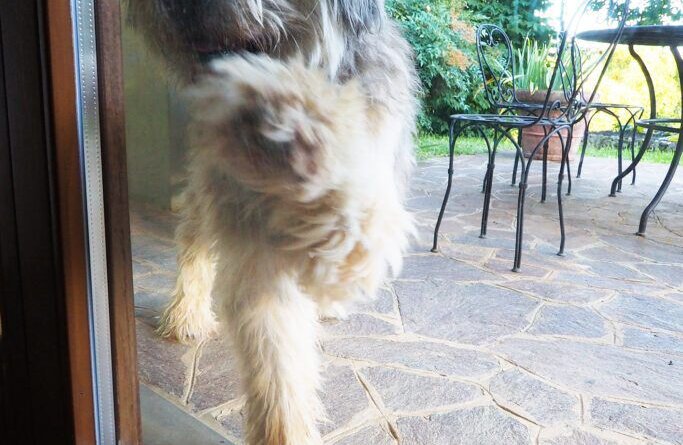Starting From Scratch – Whole Dog Journal
To solve problems with modern dog training, we begin by analyzing what canine needs are being met by the dog’s unwelcome behavior. Once we understand that, and meet those needs, our behavior-changing strategies will be far more effective.
In the case of door-scratching, it’s clear that a dog who scratches at the door wants wants to go outside or wants back inside – but why?
Humans will always accept “I need to go to the bathroom!” as a valid reason for a dog wanting to go outside. But we often make judgments about our dogs’ other motivations for door-scratching – which isn’t quite fair!
If he’s bored or lonely, try giving him interactive toys to play with in the yard, or go out and play with him instead of expecting him to entertain himself. If he’s hot or cold, bring him inside your temperature-controlled home. If he’s stressed or anxious (whether due to scary noises, separation distress, or anything else) minimize exposure to his stressor(s) while you do behavior modification to ease his distress – and accept that he may never be a dog you can just leave outside on his own.
Teach an Alternative Behavior
Regardless of your dog’s motivation for wanting the door to be opened, it’s easy to teach him a new way to ask you for this service, such as ringing some jingly bells or pressing a touch-activated noise-making button. Just remember that door-scratching works for him because he’s learned that you come quickly because you don’t want your door scratched. You’ll need to respond just as quickly to the button or bells!
First, teach your dog how to activate the sound device by shaping him to touch it with a nose or paw. Every time he manages to trigger its noise, mark the event (with the click of a clicker or a verbal marker, such as the word “Yes!” and give him a treat. Then add a verbal cue. For example, you could say, “Door?” and encourage him to activate the noise. When he is successful at ringing the bell or pressing the button, mark (“Yes!”), open the door, and give him a couple treats outside (or inside – whatever is the opposite of where you started). Gradually, you can stop delivering treats for this behavior; getting the door-opening service is his reward!
For detailed instructions on how to teach your dog to ring a bell or press a button, see “Stop Your Dog’s Demanding Behavior,” WDJ August 2017.
Manage Door Scratching
As with all behavioral issues, management will be key to your success in dealing with this behavior. While you’re teaching your dog that a bell or button is the better communication tool, you’ll need to protect your door(s) so you don’t have to come running if he starts to scratch. Here are some management tools:
- Dog scratch door protector: There are various commercial products you can use to protect your door from your dog’s claws – everything from protective tape to vinyl covers to hard plastic shields, depending on the intensity of your dog’s scratching.
- Exercise pen: You can set up a temporary exercise pen around your door(s) to block your dog’s access to the door while he learns to express himself in a more acceptable way.
- Avoid the trigger: You could simply choose not to leave your dog on the other side of doors while you are training him to use a more acceptable means of communication and/or helping resolve his anxiety about being left alone.
In many cases, a dog’s scratching behavior is modifiable. However, if your dog’s isolation or separation anxiety is significant, you may need to accept that you’ll always stay with him in the yard.


